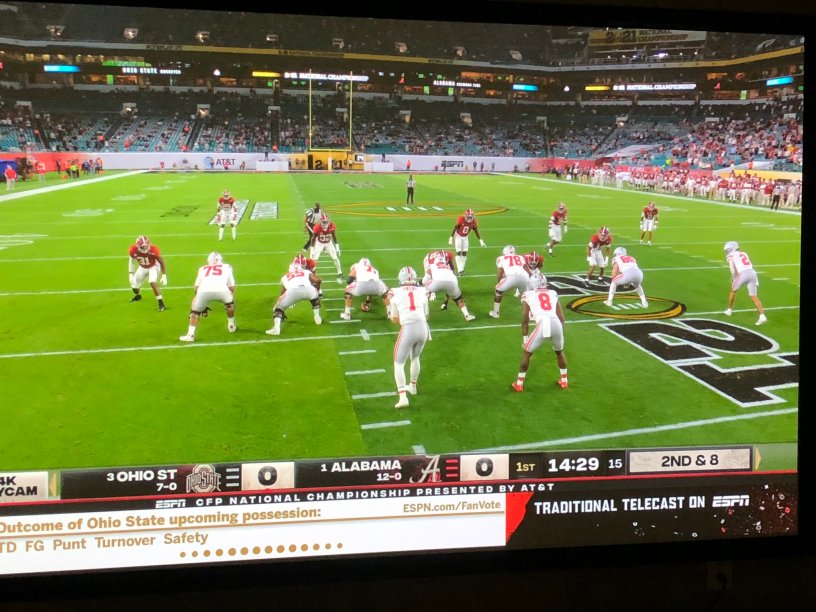By Phillip Swann
The TV Answer Man –@tvanswerman
Former Sony employee.
TV Answer Man, I read on a message board that ESPN isn’t doing native 4K anymore. How come? It was beautiful! — Todd, Pittsburgh.
Todd, that is correct. ESPN’s native 4K broadcasts of college football and basketball games were beautiful indeed. But the sports network this year has shifted to upscaled 4K for its college games, following the trend set by Fox and Peacock, among others.
“Last year, we did (college basketball and football) in native UHD (4K) HDR and that was meant as a testing ground for the entire company as we evaluated UHD internally and with our affiliates to determine plans moving forward,” Michael Sullivan, the network’s operations specialist tells Sports Video Group. “Ultimately due to a variety of factors including UHD distribution (issues), we have decided to focus on 1080p HDR this year…and also 1080p SDR across the board.”
For those not familiar, native 4K means the event is shot in 4K and transmitted to the home in 4K. Upscaled 4K means the event is shot in 1080p but upscaled to 4K for the home transmission. While upscaled 4K is normally a significant improvement over HD, it doesn’t deliver a picture as clear and detailed as native 4K. So why doesn’t the network offer native 4K, knowing that it would provide a better picture for its viewers? Four reasons:
 1. 4K Cameras and Equipment Cost More
1. 4K Cameras and Equipment Cost More
One of the primary reasons why live native 4K broadcasts are more expensive is the investment required in camera and production equipment. Native 4K broadcasts demand top-of-the-line cameras capable of capturing content in true 4K resolution. These cameras are not only more expensive to purchase but also require regular maintenance and updates to ensure they meet the highest industry standards. On the other hand, live upscaled 4K broadcasts can utilize existing HD cameras, reducing the initial cost significantly.
2. 4K Broadcasts Are More Costly to Transmit
Native 4K broadcasts require an enormous amount of bandwidth to transmit the higher-resolution content in real-time. This translates to increased costs for data transmission, satellite uplinks, and streaming services. With the shift to upscaled 4K, expect to see more TV providers add ESPN’s 4K events to their lineups.
3. 4K Requires a More Skilled Workforce
Producing live native 4K broadcasts demands a specialized and skilled workforce that is proficient in handling the intricacies of 4K production. This includes camera operators, video engineers, and post-production teams experienced in 4K editing and color grading. The higher level of expertise required inevitably results in higher labor costs.
4. 4K Requires Expensive Infrastructure Upgrades
To support native 4K broadcasts, TV networks must invest in upgrading their entire infrastructure. This includes replacing or enhancing routers, servers, and editing systems to handle the increased data load. These upgrades are not only capital-intensive but also require time and resources to implement seamlessly.
Todd, hope that helps. Happy viewing and stay safe!
Have a question about new TV technologies? Send it to The TV Answer Man at swann@tvanswerman.com Please include your first name and hometown in your message.
The TV Answer Man is veteran journalist Phillip Swann who has covered the TV technology scene for more than three decades. He will report on the latest news and answer your questions regarding new devices and services that are changing the way you watch television. See the bio for Phillip Swann here.



Dissapointing that ESPN had taken this course which is a downgrade in broadcast quality for the viewers.
At the end of the day 10-bit HDR is most of the gain, not the UHD.
They shouldn’t call it 4K if it’s not real 4K. That’s why I’m so over this whole 4K thing.